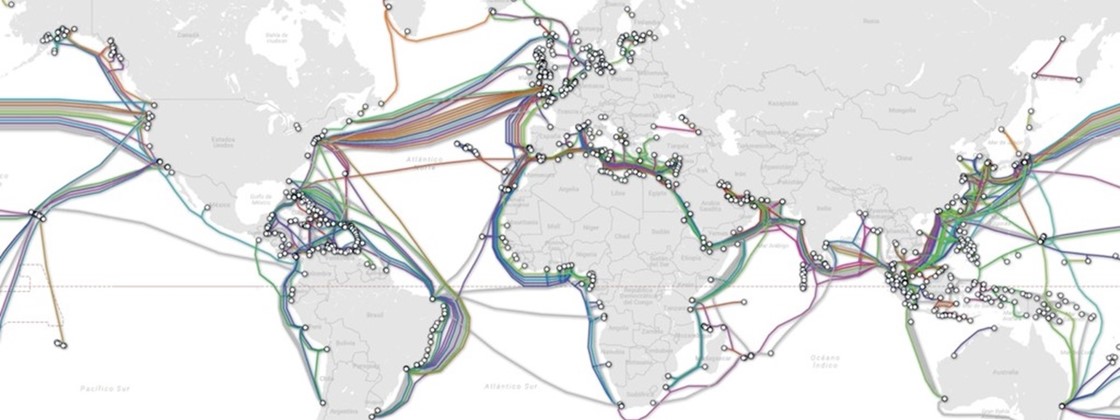🌎 How internet works
written in 19/09/21 by KevBoyzHow internet comes to you

The internet is gigant network that connects others networks around the world and physical means are nessesary to transport the signal. The top map shows the cabling that runs through the oceans transporting internet. But this submarine cables don't leave the beach and go to your house, they interconnect with others systems and are transmited by analogic signal to you.
The computer only understands the binary code and cannot read the analog signal, this is where the modem comes in. The function of a modem is to receive an analog signal and modularize it to convert it into a digital signal, Allowing devices to read it.
The Internet came to you
After connecting to internet, wou may have learn about sub-domains, the most popular is the World Wide Web (www), but there are also other lesser known networks that are commonly referred to as deep or dark web and contain more alternative content that is not always legal, such as selling stolen goods human trafficking or pedophilia, but it is very rare that you find something like this in these sub-domains, since browsing them it's pretty precarious, anyway, most sites are not indexed by search engines on these networks and the best content, hardly are found and when that happens, your links are shared in giant lists. The second sub-domain plus popular on the internet is the onion or .onion which can only be accessed by the Tor browser and can be accessed by anyone. The default browser in .onion is Torch which can be accessed from the Tor Browser via this link: xmh57jrzrnw6insl.onion
Acessing a site
The entire internet is physically stored on different servers that are responsible for hosting all the websites available on the web and makes them accessible anywhere in the world with an internet signal. When you access a website, a request is sent to the server that will process it and return or not with the site code, your browser will be responsible by loading it on your machine. There are different types of server like file server, better known as cloud, email server and many others, in the case of the server mentioned in the example, it is of the WebHost type, similar to an apartment where the concierge is responsible for calling the tenants you want to talk to.
Requesting a site
The entire internet is based on TCP/IP protocols that ensure that all communications follow a standard, can be accessed on any device, and which also work as a unique identifier on the internet that is called an IP address. When connecting to the internet, two ip addresses are generated to identify your machine, the ipv4 and ipv6 that have the same purpose. All internet searches go through a DNS server that locates the ip of a website through the domain name, like a telephone directory without the DNS server to access for example DuckDuckGo you should search for 191.235.123.80 This is what really happens under the covers. Everything that goes through the dns server is stored in a local history on your machine and on the server, and can be accessed on Windows with the command ipconfig/displaydns the data will be saved there even if you browse in incognito mode.
Uniform Resource Locator
To access a website you need a URL. Its main part is the domain name which is soon accompanied of the TLD's that indicate that the site belongs to a government agency or an institution, such as sitedom.edu.gov.br, a url can have multiple TLD's. There are a few different types of TLD's and the most popular are gTLD's or generic TLD's like .com, .org, .net, which in general, they give a meaning to the website link, so they can understand what it is about even without accessing it. In URL's it is very common to find slashes (/) them represent a path within the directory of the site in which the current page is located. Finally the http or https protocol which is very common in URL's, it represents if the site whether or not it has SSL security, which is security by encryption, so if your data is intercepted by third parties while you browse, it will be safe.